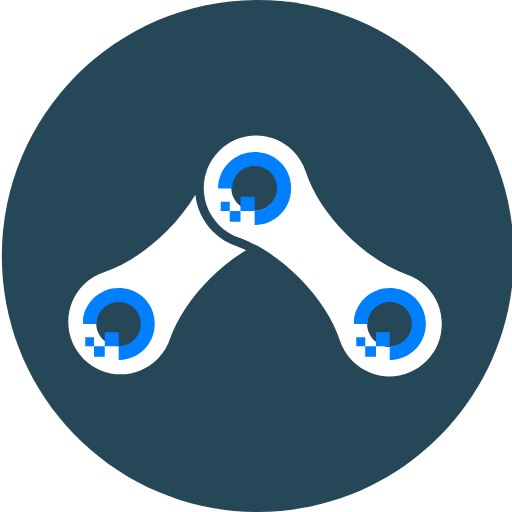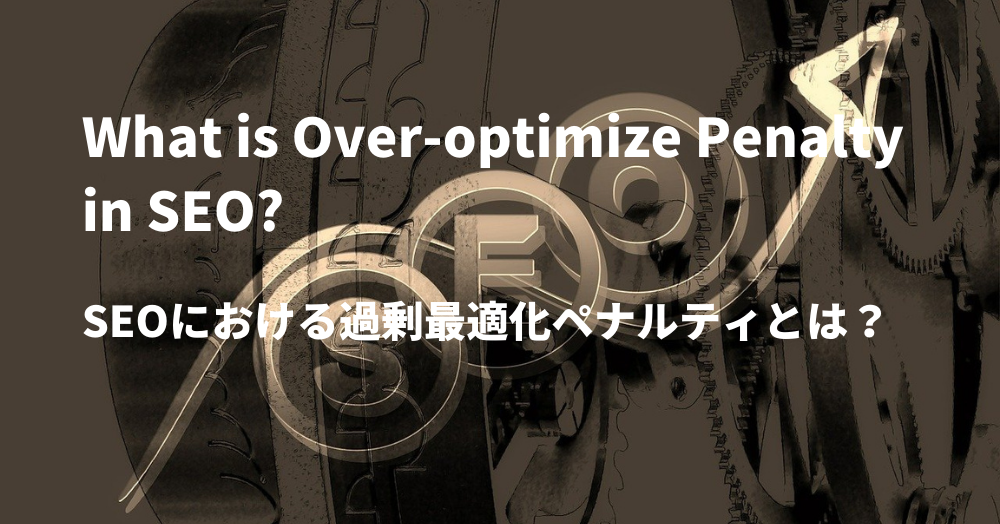過剰最適化ペナルティとは、検索エンジンGoogleのアルゴリズム変更に関連して使われるもので、Webサイトが過剰なSEO対策によりペナルティを受ける可能性があるというものである。順位が下がったり、検索エンジンのインデックスから除外されたりすることで顕在化することがある。検索エンジンから発生するトラフィックが失われる危険性もある。過剰な最適化を罰するというペンギンアップデートは、2012年4月24日にGoogleによって展開された。
そして、Webサイトにおいて、ページ内外の領域で不正なSEO対策が確認され、それが過剰最適化という形で示された場合に、Over Optimization Penalty(過剰最適化のペナルティ)が課されます。これは、例えば、キーワードの分布や不自然なリンクの増加などに影響することがあります。Webサイトにとって、過剰最適化ペナルティは、ランキングの大幅な低下を意味します。最悪の場合、検索エンジンのインデックスからページが除外されることさえある。
定期的なアルゴリズムの調整と過剰最適化のペナルティ
Googleは定期的にアルゴリズムを調整し、検索に関連するページや付加価値のあるページをユーザーに提供するようにしている。過剰に最適化されたページでは、通常このようなことはない。ここでは、ある種のSEO技術が単に過剰に使用され、ランキングに影響を与えるだけであるはずなのに、ユーザーの興味を無視したものになった。ペンギンアップデートなどのアルゴリズム調整により、ウェブサイトはそれに応じて過剰最適化のペナルティを受けることになったのである。
しかし、アルゴリズムの変更は、個々の最適化領域にしか影響を与えない。そのため、1つのWebサイトが1つのSEO手法に対してペナルティを受け、他の過剰最適化テクニックは(まだ)影響を受けないということは十分にあり得ることなのだ。しかし、その一方で、Googleの検索アルゴリズムは非常に「成熟」しており、ウェブサイトの過剰な最適化という対策がランキングの上昇をもたらすことはほとんどないのである。
関連するGoogleアルゴリズム、用語、およびアップデートについては、ガイドラインで詳しく説明されている。
- GooglePandaアップデート
- Googleフロリダアップデート
- Googleヒルトップアルゴリズムの更新
- GooglePossumアップデート
- Googleペンギンアップデート
- GoogleTrustRankアルゴリズム
- GooglePageRankアルゴリズム
- Googleカフェインアップデート
- 検索エンジンの情報検索とは何ですか
過剰最適化とはどのようなものでしょうか?
Too much of a good thing – このことわざは、SEOの開始時には重要ではなかった。なぜなら、あまり多くはなかったからである。つまり、過剰最適化が機能したため、それが実装され、良好なランキングが達成され、それに応じてさらに最適化が実行された。
Google検索エンジンで過度に最適化されたペナルティを引き起こす可能性のあるSEOテクニックのいくつかの例:
- キーワードの乱用: ウェブサイトは非常に高いキーワード密度を持っている。つまり、キーワードはページに不自然に頻繁に表示され、キーワードの関連性を高めることを目的としている。初期のSEO時代には、より多くの訪問者を生み出すために、トピック以外のキーワードがWebサイトに組み込まれることが多くあった。
- キーワードリンク: また、 リンクテキストでキーワードを過度に使用すると、内部リンク、外部リンクを問わず、過剰最適化ペナルティが発生する可能性がある。これは、リンク先のキーワードを完全に排除するという意味ではなく、長いフレーズをリンクテキストにするなど、できるだけ「多様性」を取り入れることが必要である。
- 隠しテキスト: この方法はブラックハットSEOの領域に属し、ユーザーには表示されず、検索エンジンにしか読めないテキストをWebサイトに組み込むことを指す。キーワードの乱用と同様に、このテキストには多くのキーワードが含まれていることがよくある。たとえば、テキストは背景と同じフォントの色で隠される。
- リンクの急速な増加:あるページが、いつも少量のリンクの増加しかなかったのに、突然多くのリンクを獲得した場合、リンクの大量購入などによる不自然なリンク構造を示す。
- リンク交換: このタイプのリンク構築は、非常にシンプルであったため、長い間非常に人気があった。ウェブマスターは互いに話をするだけで、交換ページと自分のページのどちらにマッチしているかに関係なく、リンクを交換したのである。その結果、リンクの配布がプロ化された、いわば大規模なリンク交換ネットワークが生まれた。
2020年のWebサイトにおける過剰最適化の例
- オーガニックトラフィックを集めるために、不要なページや無関係なページを作成すること: 2020年、SEO担当者の多くは、あらゆる種類のバイヤーペルソナや業界からのトラフィックを増やそうとする。不必要で無関係な非変換型トラフィックをWebサイトに集めることは、2020年には方法論であってはならない。
企業の主要なニッチに無関係なウェブページを作成すると、ドメインの主要な焦点と特定の知識領域に関する専門知識についてGoogleアルゴリズムが混乱する可能性があります。信頼性に影響を与え、メインのナレッジドメインに関連する関連性と信頼性のスコアを低下させる可能性がある。 - 不自然なアンカーテキストを使用する:アンカーテキストに不自然なキーワードやコピーペーストのマネーキーワードを多用すると、Googleはその文章をアルゴリズムだけのために書いたと簡単に理解することができる。アンカーテキストはコンテキストを提供する必要があり、それは正しいです。しかし、適切な文脈や文法なしに、関連するページと関連しないページのすべてで、同じ単語を同じ正確な順序で20回以上使用すると、Googleはウェブマスターガイドラインを破って過剰最適化を行っていると判断することができる。このような状況を防ぐには、ステミングを使ったり、対象となる単語だけでなく、文章にリンクを貼ったりして、自然なアンカーテキストを使用することが有効である。
- 不自然な内部リンク構造を使用すること:内部リンクのすべてを、少ないウェブページに向けることは、問題がある。内部リンクは、Webエンティティの内部PageRankを流し、また、トピックのコンテキストと一緒にサイトの階層の観点からWebページ間の関連性を示しています。自然な内部リンク構造を使用することも、自然なアンカーテキストと同様に重要です。また、内部リンクのプロファイルは自然であるべきで、あなたが主に非トラフィックのウェブページをリンクする間違った内部リンク構造を作成した場合、アルゴリズムは、これも自然な内部リンク構造ではないと思われる可能性がある。例えば、内部的に最もリンクされているページが「会社概要」や「お問い合わせ」ページである場合、これは検索エンジンにあなたのサイトの最も重要なWebページについての正しい信号を与えることはない。
- 複数の見出しの使用または不要な見出しの使用:見出しにキーワードを使用することは有効だが、メインクエリに複数のH1を使用したり、ユーザーにとって付加価値のない不要な空の見出しを作成すると、アルゴリズムは、あなたが検索エンジンのためだけにこれをやっていると考えることができる。これは、検索エンジンのアルゴリズムによって、操作と認識される可能性がある。
- リンクアウトが多すぎる:情報の出所を示すため、あるいはユーザーがさらに調べるために、他のドメインから他のウェブページにリンクを張ることができる。しかし、検索エンジンにあなたのウェブサイトがこれらの超オーソリティのコンテンツソースと同じくらい信頼できるものとして分類されることを示すために外部リンクを使用する場合、それはうまくいかないだろう。しかし、このテクニックを使いすぎると、あなたのPageRankを消費し、外部リンクのターゲットドメインにブーストを与え、また、あなたの信頼スコアと一緒にあなたの参照の値を減少させることになる。
- マネーキーワードのドメイン名またはURLへのキーワードの乱用:ドメイン名にキーワードを使用することで、2020年に少しばかりブーストすることができる。しかし、スパム的なコンテンツパブリッシャーである確率が高いため、そのドメインに対する警戒心を生む可能性もある。将来的には、人々はドメインにキーワードの利点を使用しているため、Googleはその価値を減少させた。今日、一般的な単語やブランド単語を含むドメイン名は、マネーキーワードを含むドメインよりも良い結果を得ることができる。
また、一部のSEO担当者は、最近では誰もURLを変更しないため、URLに多くのクエリを使用することがランキングに役立つと信じている。URLは、検索エンジンとともに、人間の読者に対するメッセージでもありる。URLはランキングのシグナルであり、検索エンジンにサイトの階層を示すもの。しかし、過剰に最適化され、長く、キーワードが詰め込まれたURLは、過剰最適化ペナルティの原因となり得る。 - キーワードを詰め込んだフッター、サイドバー、ヘッダー:すべてのWebサイトにおいて、同じWebページを同じ場所から同じキーワードでリンクしている場合、最適化しすぎのペナルティとなる可能性がある。もちろん、定型リンクは、検索エンジンにとって、Webサイトを理解し、ユーザーと一緒にクロールしてナビゲーションを行うために有用である。しかし、同じクエリに対して異なるランディングページを作成し、フッターやヘッダーからターゲットキーワードでリンクさせるなど、このテクニックを多用すると、過剰最適化ペナルティを受ける可能性がある。
ウェブマスターガイドラインに準拠し、ユーザーに対して最適化すること
過剰最適化の問題は、過度に使われるSEOテクニックだけでなく、テクニカルSEO、つまり技術的な対策だけでGoogleの検索結果にページを表示させようとすることに強いこだわりがあることである。技術的にきれいなページは、アルゴリズムに基づく検索エンジンにその内容を示し、ロボットに道を示すために重要だが、ランキングに影響を与える一面でしかなく、万能ではない。
ページの視認性にプラスの影響を与えたいのであれば、技術だけでなく、ユーザビリティも正しくなければならない。ウェブサイトの最適化の目的は、訪問者を増やすだけでなく、例えば問い合わせフォームを送信したり、購入したり、ニュースレターのためにメールアドレスを残したりするなど、コンバージョンに至るまで説得することである。
Webサイト最適化に関するウェブマスターガイドラインを遵守し、合理的な範囲でSEO技術を使用すれば(検索エンジンにとってもユーザーにとっても)、過剰最適化ペナルティを恐れる必要はないだろう。また、ユーザーエクスペリエンスという意味では、オンページ・オフページの施策に加えて、コンバージョン最適化やコンテンツマーケティングなど他のオンラインマーケティング施策の力を借りてページの質を向上させたり、ソーシャルメディア活動で認知度を高めたりすることも意味があることである。
The over-optimization penalty is used in connection with an algorithm change of the search engine Google, in which websites can suffer a penalty due to excessive SEO measures. It can manifest itself through a downgrading in the rankings or even exclusion from the search engine index. There is a risk of loss of traffic that is generated by search engines. The Penguin Update, which was supposed to punish over-optimization, was rolled out by Google on April 24, 2012.
An Over Optimization Penalty – the penalty for over-optimization – is then imposed if unauthorized SEO measures can be identified in a website in on- and off-page areas, which are shown in the form of over-optimization. This can affect, for example, the keyword distribution and unnatural link growth. For the website, the Over Optimization Penalty means a massive loss of ranking. In the worst case, the page can even be excluded from the search engine index.
Regular algorithm adjustments and Over-optimization Penalty
Google regularly adjusts its algorithm in order to provide the user with the pages that are relevant to his search and that provide him with added value. This is usually not the case with over-optimized pages. Here certain SEO techniques were simply used excessively, which should only have an impact on the ranking, but ignore the user interest. Due to algorithm adjustments such as the Penguin update, websites were punished accordingly with an over-optimization penalty.
However, the changes to the algorithm only affect individual optimization areas. So it is quite possible that one website will be penalized for one SEO technique, while the other overly used technique is not (yet) affected. In the meantime, however, the Google search algorithm is so “mature” that hardly any measures of over-optimization of a website bring a better ranking.
You may learn more about Related Google Algorithms, terms and Updates via our Guidelines:
・Google Panda Update
・Google Florida Update
・Google Hilltop Algorithm Update
・Google Possum Update
・Google Penguin Update
・Google TrustRank Algorithm
・Google PageRank Algorithm
・Google Caffeine Update
・What is Information Retrieval for Search Engines
What can over-optimization look like?
Too much of a good thing – this saying was of no importance at the beginning of SEO, because there was simply not too much. That means: Over Optimization worked, so it was also implemented, good rankings were achieved and further optimization was carried out accordingly.
Some examples of SEO techniques which can cause an over-optimize penalty in Google Search Engine:
・Keyword stuffing: The website has a very high keyword density, ie the keyword appears unnaturally often on the page and is intended to increase the relevance for the keyword. In early SEO times, non-topic keywords were more often built into the website to generate more visitors.
・Keyword links: Also, excessive use of keywords in the link text, both internal and external links can lead to an over-optimization penalty. This does not mean that the keyword in the link is completely excluded, but you should bring in as much “variety” as possible, for example using long phrases as the link text.
・Hidden text: This method belongs to the area of Black Hat SEO and refers to the integration of text on the website that is not visible to the user and is only available for the search engine to read. As with keyword stuffing, this text is often peppered with many keywords. The text is hidden, for example, by the same font color as the background.
・Fast link growth: If a page suddenly receives a lot of links while there was always only a small amount of link growth, this indicates an unnatural link structure, for example through the massive purchase of links.
・Link exchange: This type of link construction was very popular for a long time because it was very simple: Webmasters simply talked to each other and exchanged links, regardless of whether they matched the exchange page or their own page. This resulted in extensive link exchange networks in which the distribution of links was professionalized, so to speak.
Examples of Over-optimization on a Web Sites in 2020
・Creating Unnecessary and Irrelevant Pages to Attract Organic Traffic: In 2020, most of the SEOs try to increase the traffic from every kind of buyer persona and industry. Attracting the unnecessary and irrelevant non-convertible traffic to a web site shouldn’t be a methodology in 2020.Creatin irrelevant web pages to the main niche of the company can confuse the Google Algorithm about the domain’s primary focus and its expertise on a specific knowledge domain. It can affect the reliability and decrease the relevance and confidence scores related to the main Knowledge Domain.
引用:What is Over-optimize Penalty in SEO?|Holistic SEO
・Using Unnatural Anchor Texts: If you use lots of unnatural and copy-paste money keywords in the anchor texts, Google can easily understand that you have written that sentence for only the algorithm. Anchor texts should provide context, it is right. But if you use the same words in the same exact order more than 20 times within all relevant and non-relevant pages without a proper context and grammar, Google can decide that you are doing over-optimization by breaking the webmaster guidelines. To prevent this situation, using natural anchor texts by using stemming or putting the link to a sentence instead of just the targeted words can be useful.
・Using Unnatural Internal Link Structure: Pointing all of the internal links to the lesser amount of web pages can be problematic. Internal links flow the internal PageRank of the web entity and also it shows the relevance between web pages in terms of site hierarchy along with the topical context. Using a natural internal link structure is also important as well as natural anchor texts. Also, the internal link profile should be natural, if you create a wrong internal link structure that mostly links the non-traffic web pages, the algorithm will think that this is not also a natural internal link structure. Such as, if your internally most linked pages are “about us” or “contact us” pages, this won’t give the right signal to the Search Engine about the most important web pages of your site.
・Using Multiple Heading One or Unnecessary Heading Use: Using keywords in headings can help but if you use more than one H1 for the main queries or also if you create unnecessary empty headings without any added value for the user, the algorithm can think that you are doing this only for Search Engine. It can be perceived by Search Engine algorithms as manipulation.
・Linking out Too Much: You can give links to the other web pages from other domains for showing the source of the information or helping the user for further research. But, if you use external links to show that Search Engine your web site can be categorized as much as trustworthy with these super-authority content sources, it won’t work. Google can understand your quality or category thanks to outgoing links or backlinks but if you try to use this technique too much, it will consume your PageRank, it will give a boost for your external link’s target domains and also it will decrease your reference value along with your trust score.
・Money-keyword Domain Names or Keyword-stuffing in URLs: Using keywords in domain names can create a little boost in 2020. But it also can create a caution towards the domain because of the probability of being a spammy content publisher. In the future, people have used the advantage of keywords in domains so Google has decreased its value. Today, domain names with generic and brand words can have better results than domains with money keywords.
Some SEOs, also believe that since no one changes its URLs these days, using lots of queries in the URL can help for ranking. URLs are messages for human readers along with the Search Engines. They are signals for ranking and showing the site hierarchy to the Search Engine. But over-optimized, long, and keyword-stuffed URLs can be a reason for the over-optimization penalty.
・Keyword Stuffed Footers, Sidebars, and Headers: Linking the same web page across all web site with the same keyword from the same spot can be a reason for the over-optimization penalty. Of course, boilerplate links can be useful for Search Engines for understanding the web site and crawling along with users for the navigation. But, using this technique intensely such as creating different landing pages for the same query by linking them with the targeted keywords from the footer and header can cause an over-optimization penalty.
Comply with webmaster guidelines and optimize them for the user
The problem with over-optimization is not only the overly used SEO techniques but also the strong focus on technical SEO – the attempt to get the page in the search results at Google alone through technical measures. A technically clean page is important to show the algorithm-based search engine what it is about and to show its robots the way, but it is just one aspect that influences the ranking and not a panacea.
If you want to positively influence the visibility of your page, then not only the technology but also the usability must be right. The goal of website optimization is not only to get more visitors but also to persuade them to convert, for example sending an inquiry form, making a purchase, or leaving an email address for the newsletter.
If you adhere to the webmaster guidelines for website optimization and use SEO techniques to a reasonable extent (both for the search engine and for the user), you will not have to fear an over-optimization penalty. In addition, in the sense of the user experience, it makes sense to improve the quality of your page in addition to on-page and off-page measures with the help of other online marketing measures such as conversion optimization or content marketing or to increase awareness through social media activities.


コメントを残す